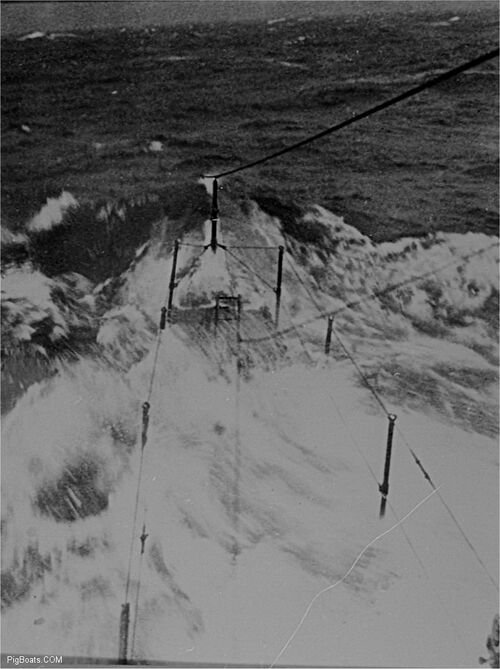N-1

Photo courtesy of NARA Seattle.

A closeup of the photo above, showing details of the bow planes handwheel mechanism and the depth gauge.
Photo courtesy of NARA Seattle.

A view of the N-1's engine room, looking forward, January 22, 1917. There is still work to be completed on the NELSECO 240V8FS engines. They were shipped to the yard fully assembled, then had to be partially disassembled to get them into the hull, with the finish work being completed after they were fully bolted down to the engine mounts. The walking deck plates between the engines need to be installed as well.
Photo courtesy of NARA Seattle.

N-1 and N-3 moored on opposites sides of each other at the fitting out pier at the Todd Drydock & Construction Company, Seattle, WA., May 9, 1917. Despite how the photo is stamped, by the date of the photo the Seattle Construction & Drydock Co. had been sold to the Todd company and renamed. N-1 had five more months before she was commissioned. The yard workers are busy with the periscope shears and bridge area.
Photo courtesy of NARA Seattle.

N-1 on her launch day of December 30, 1916. She is being assisted by two small yard tugs, one of which was named the "Harold C". The Todd yard was located at the foot of Charles Street on the Seattle waterfront, just to the west of the present day Lumen Field, in a location that is now the Port of Seattle.
Photo from the Seattle Post-Intelligencer newspaper.

N-1 underway in Elliot Bay in the late summer of 1917, with the Seattle "skyline" in the background. She is likely on her builder's trials and does not yet have the bridge fairwater installed.
Photo courtesy of NARA Seattle.

The business end of the N-1's torpedo room showing the breech doors for each tube and the arrangement of the valves and gauges.
Photo in the private collection of Ric Hedman.

This caption is written on the back of this photo taken by Harry E. Hoffman: "N-1's crew loads a torpedo at New London in 1918. Chief Gunner's Mate Earle Reed (in torn shirt), the Chief of the Boat, directs the operation. Facing the camera is Quartermaster First Class Hand and, in the background, is Chief Engineman Miskoski. Providing the muscle power for operating the loading crane is Dalieden, Electricians Mate Third Class. In the distance the submarines E-2, N-7, G-2, and H-2 can be seen. Also in the background is the fishing schooner Helvetia which served as a decoy for German U-boats during the war."
Photo ID from Bob Porterfield who is in possession of this Harry E. Hoffman photo. The Library of Congress also has this photo.

N-1 on Long Island Sound in the early 1920's towing a small boat behind her with men aboard it. Based on the mast and boom it may be for retrieving practice torpedoes. The enclosed bridge fairwater was a lesson learned from war patrol experience in the north Atlantic during WWI.
U.S. Navy photo.

The torpedo room of the USS N-1 taken some time in the late teen's to early 1920's. It shows some crew in the torpedo room posing for the camera. On the back of the photo these men are identified as, from left to right, Machinist's Mate Jack Richards, Ship's Cook Tannen Bloom, Signalman Head, and Gunner's Mate Lyons.
Photo Courtesy of John Parker, identification of the men by Robert Porterfield.

N-1 pushing her nose through Atlantic swells. The N-class were small boats and they tended to be very wet even in a moderate sea. Date is unknown but is likely the early 1920's.
Photo Courtesy of John Parker.
Page created by:
Ric Hedman & David Johnston
1999 - 2023 - PigBoats.COM©
Mountlake Terrace, WA, Norfolk, VA
webmaster at pigboats dot com
